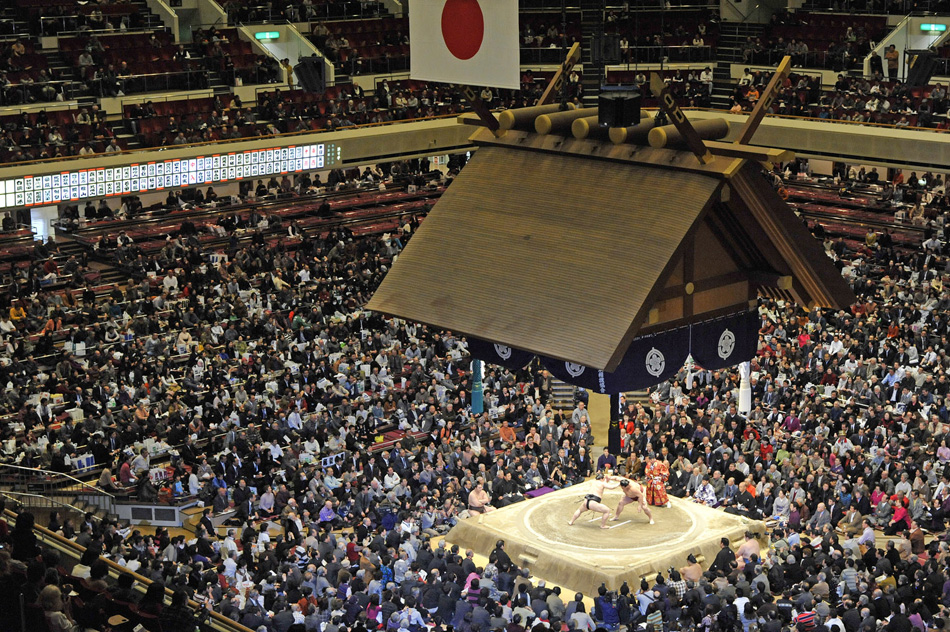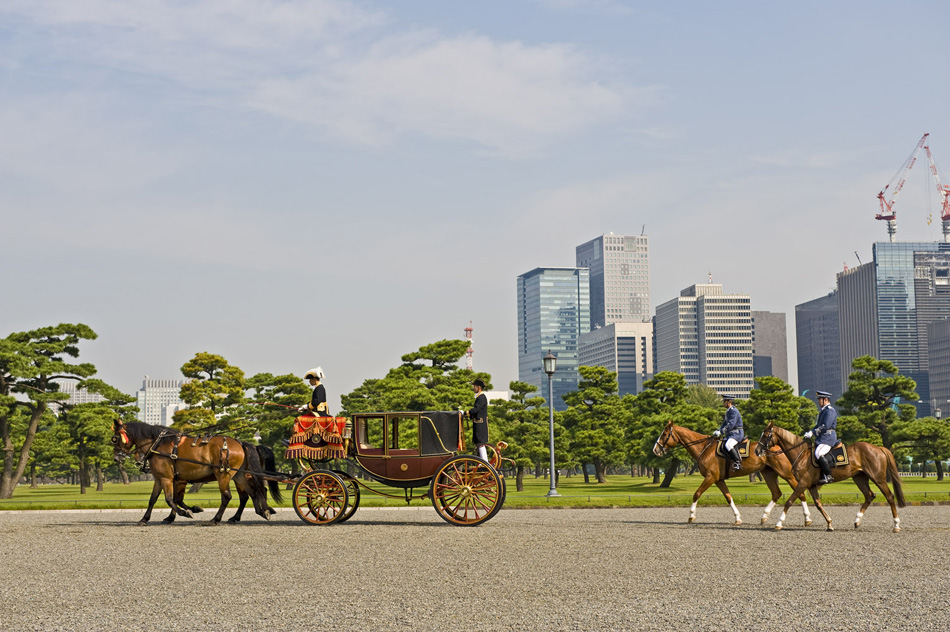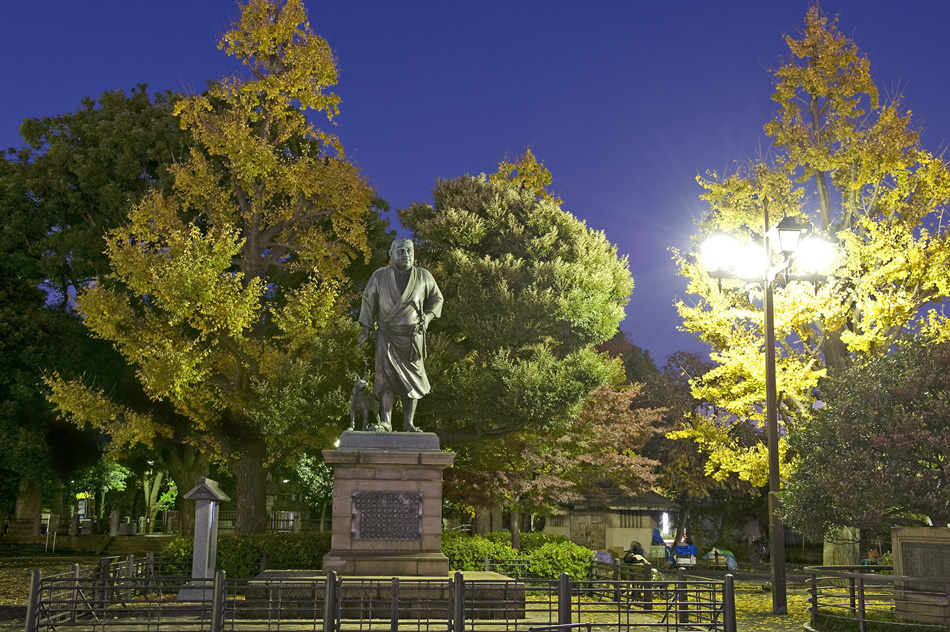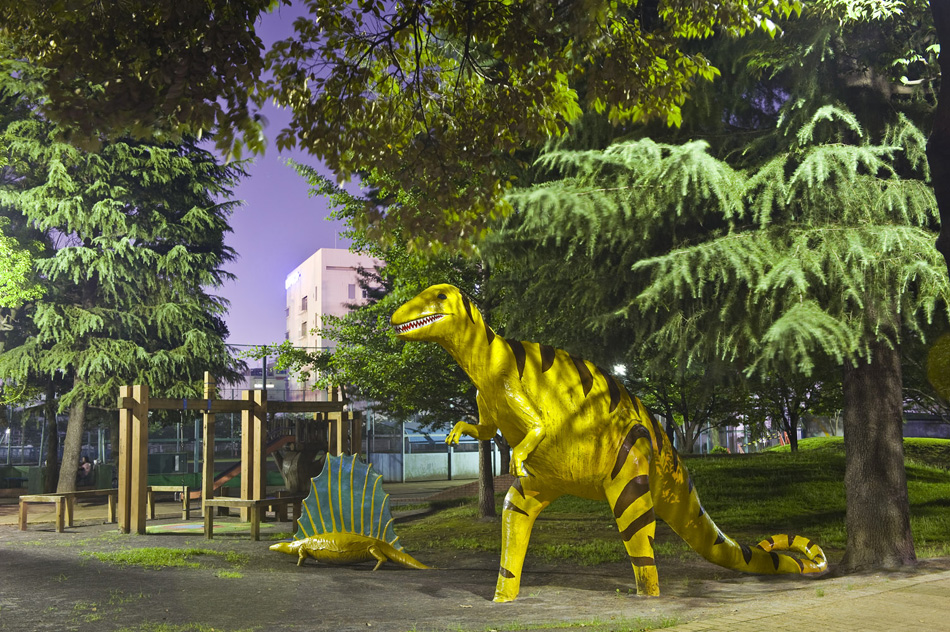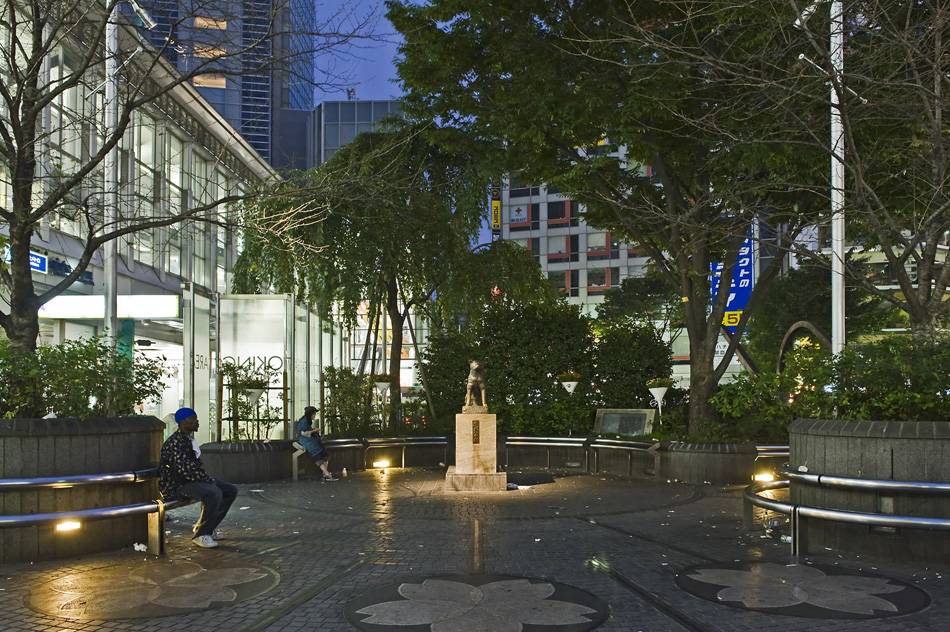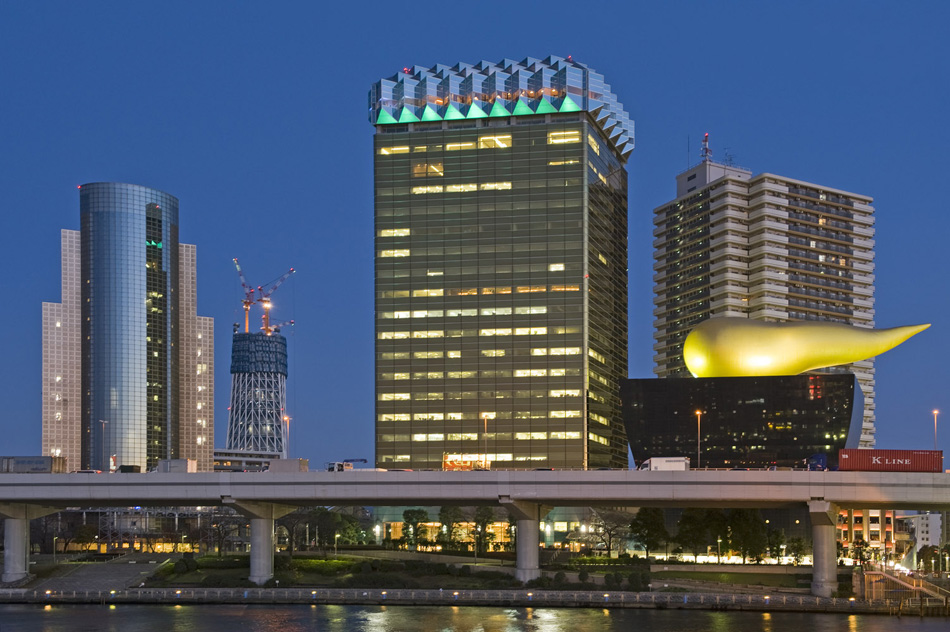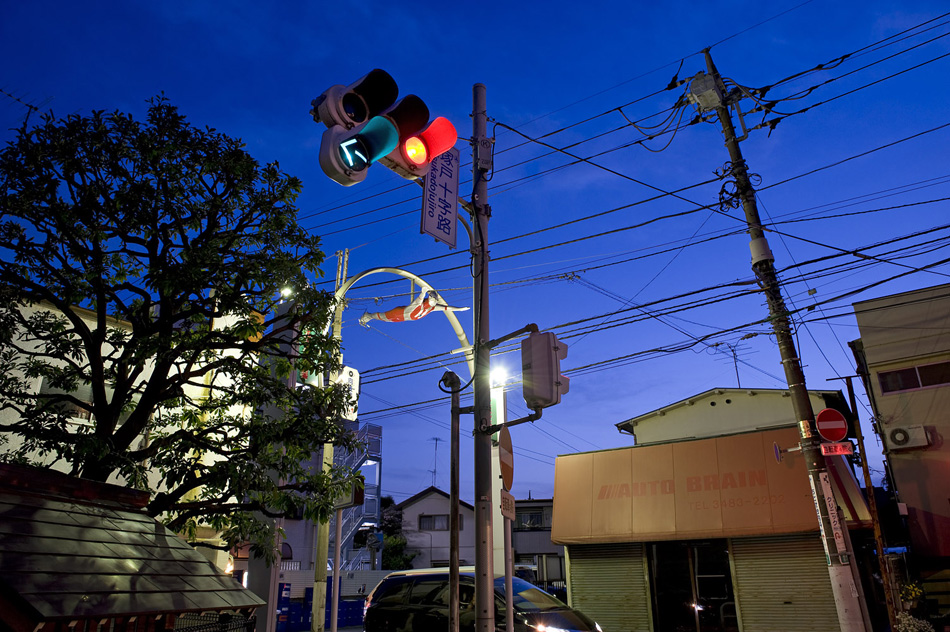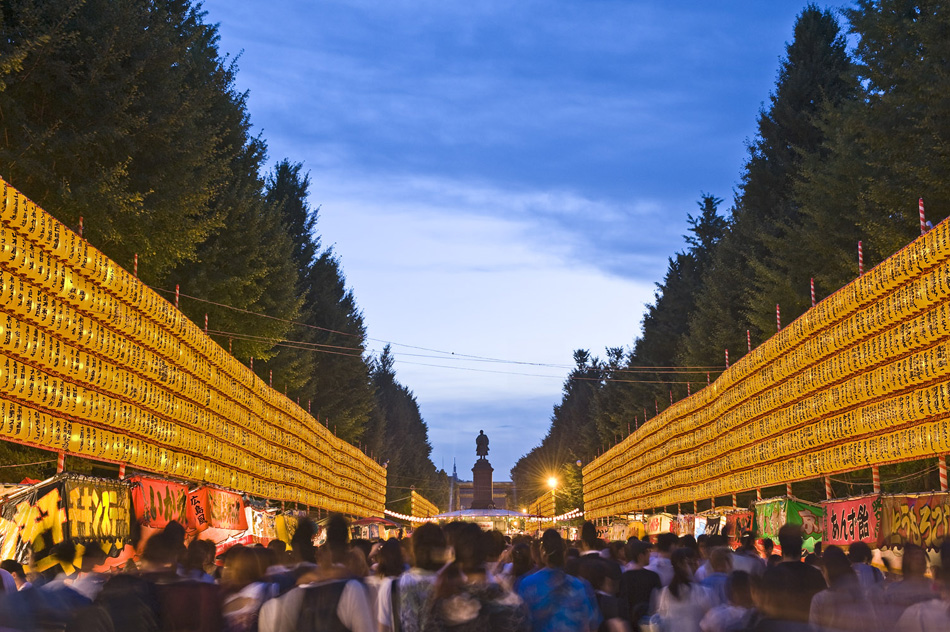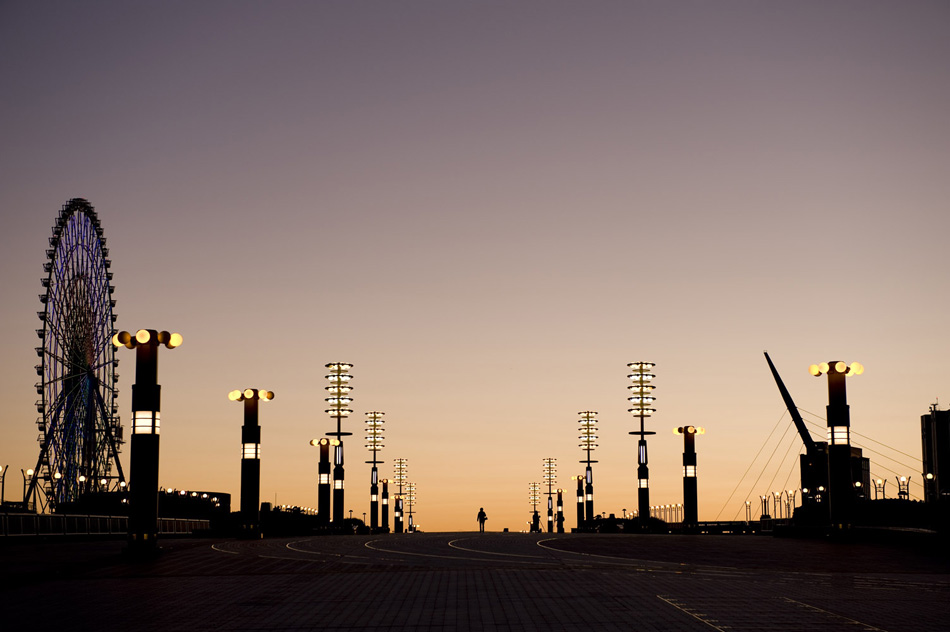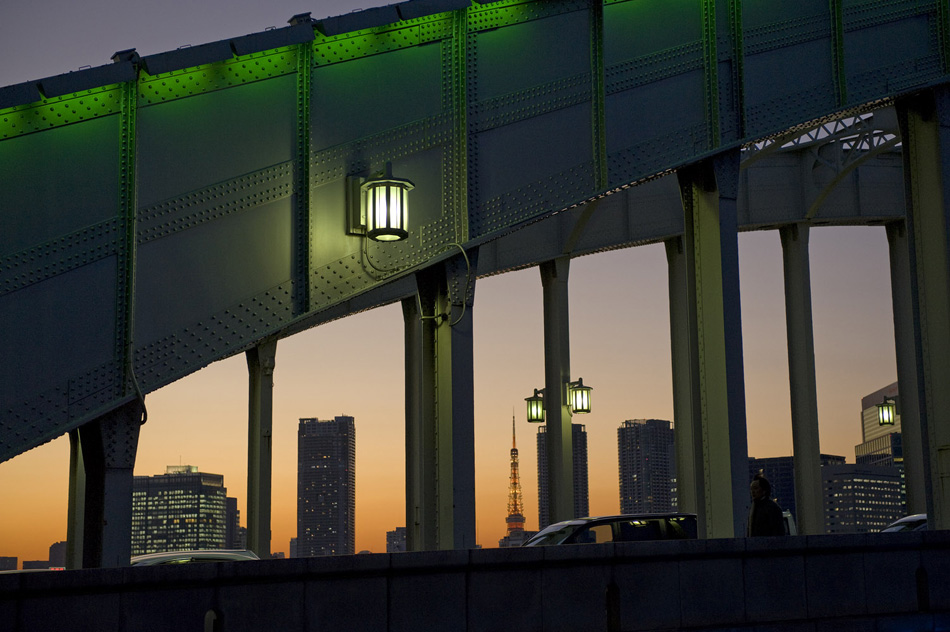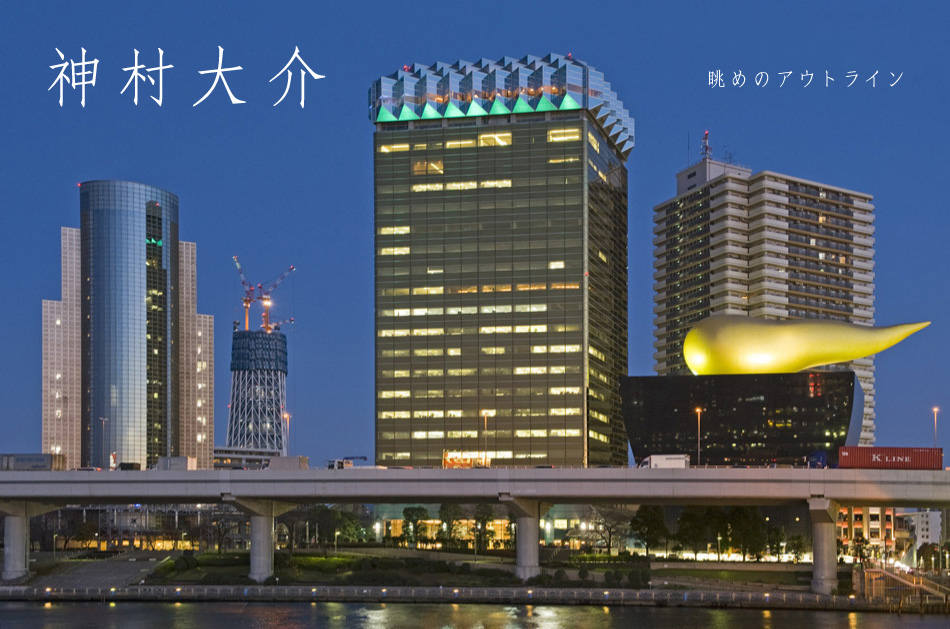
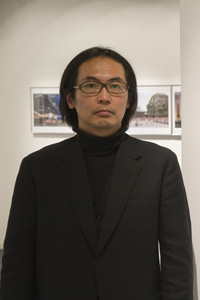
神村大介
KAMIMURA Daisuke
1969年 東京生まれ
1992年 東京造形大学デザイン1類卒業
1996年 グラフィックデザインを経て写真へ転向
1996年 「遠くにいる人」銀座ニコンサロン
2001年 「in a self-service cafeteria」キャノン写真新世紀・佳作
2001年 「ARIA」新宿コニカプラザ
2006年 「PAINTED WALL KOREA」新宿ニコンサロン
2011年 「METROPOLIS東京画像:眺めのアウトライン」銀座ニコンサロン
1969 Born in Tokyo
1992 Graduated from Tokyo Zokei (creating art and design) University
1996 Started photographic career after professional experience as a graphic designer
1996 "People from distance" exhibition at Nikon Salon Ginza
2001 "In a self-service cafeteria" won merit award of "Canon New Cosmos of Photography" (new photography generation) photo contest
2001 "ARIA" exhibition at Konica Plaza Shinjuku
2006 "PAINTED WALL KOREA" exhibition at Nikon Salon Shinjuku
2011 "METROPOLIS TOKYO IMAGES: The Outline of the Scenery" exhibition at Nikon Salon Ginza
twitter
東京には多くの人々に知られ、たくさんの人々が集まる場所があります。そのような場所には漠然と視覚の型、その場を言い表すのに最も良い眺め、つまり絵ハガキのようなイメージが共有されているように思います。それは無数の視線が交差する場にあって人々の価値観がノイズを淘汰し風景のアウトラインを選びとっていくのかもしれませんし、繰り返し提供されるマスメディアやインターネットの情報がお手本を作っていくのかもしれません。いずれにしてもその構造は多くの人の視線が重なるほど一般性や共通価値が生まれやすくなるという、ちょうど美人や美男の顔が何人もの個性的な顔を重ねた平均値として立ち現れるのに似ています。風景というものは人の数だけ見え方がある元々は個的な世界なはずですが人々の価値を集約していけば平均が現れ一般化していくのです。そのように世界を個別の世界から一般化へ向かわせるのはおそらく言語を操る人間の特性からくるものでしょう。言語の特性とはごく簡単に言えば世界を概念化することです。花という言葉はあらゆる花の概念であるように、それぞれが見るハチ公像も渋谷のハチ公という共通概念になっていくということです。言ってみれば固有性が消えた一般名詞のような風景が我々のそこかしこに存在するということになるのです。
そのような風景が暮らしの中でより様式化されているのが、年に一回の祭り、春の花見、夏の盆踊り、秋の運動会、冬のイルミネーションであり、我々の暮らしを取り巻くようにいつも側にあるのが黎明や薄暮の空、常夜灯の下の夜景、朝が来て夜が来るというあたりまえの日常の風景です。このように様々なサイクルで巡ってくる"再生される風景"に人は寄り添って暮らしています。人々はそこへ参加し見ることによって土地に同化し自らが再生の風景の一員になることを望んでいるようにも見えるのです。そして、様々に生成したイメージはマスメディアやインターネットによって今度は量産拡大され膨大な情報としてアーカイブされていきます。我々はそんな一般化された記号の風景を望み、享受し、作り上げ、保存することで暮らしの糧にしているのです。記号の風景とは何なのでしょうか。それは人々の願望や理想、安寧がない交ぜになったいつもと変わらぬ"常識の風景"ということのなのかもれません。常識が覆されると人は動揺します、だから変わらぬ風景を、調律された音楽のように滑らかでノイズレスな風景を我々はどこかで求めているのです。
そのような世界を意図的に拾いあげ人々の願望に沿うような写真、そんなモノは無いかもしれません。写された写真には写真の宿命であるドキュメント性が剥き出しになってくるからです。写真の隅々を見れば様々なノイズに満ちて溢れ撮影者の自分にも気づかないことを出来上がった写真の上から発見していくことになるのです。しかし虚構を目指した結果、リアルが見えてくるならば、嘘から出た真と言わないまでも何か新たな発見もあるのかもしれません。一般化された概念の風景から世界を見渡し写真機を構え、写された写真という現実のディティールからもう一度具体世界を見る。具体と概念の往復のパラドックスは視覚の袋小路かもしれません。しかしここで採集された風景の標本に何かが隠されている気がするのです。写真に記録された微細なノイズは我々の意識からは遠いところにある無意識の光跡です。その光の跡から、それぞれの写真から、新たな風景が見えてくることを祈りつつ。
神村大介
Tokyo samples: specimens of landscapes
The pictures I am introducing here consist of Tokyo scenes that at first may appear somewhat typical. One of my objectives is for the number of pictures to grow tirelessly and enormously, eventually covering every place and every event in the metropolis. This conjures up an ostensibly impossible task: one man's challenge against Google maps and its millions of images to replace them with his own. Yet despite the odds, it is my goal: to dream up and create the very picture you see at the top of the search engine when you type in things like "Hachiko dog at Shibuya."
Tokyo has many well-known places that are swarming with people. To my eyes, such places commonly share certain specific qualities. Their essence is such that they force us to see each location in a certain way and find the best views, like those seen in its post card form. This may be the result of some form of shared aesthetics that have been distilled over time. Post card pictures are stark, hard-edged and unambiguous. It may also be possible that people get more accustomed to certain types of images by relentless repetition of imagery via the internet and other forms of media. The more people agree with something, the more likely that it is believed to be good. Everyone shares similar beliefs on what constitutes beauty in men and women, and they fall into brackets categorized as such without ever necessarily looking unique. In fact, they frequently have a more generalized look. Now consider a landscape: each landscape should look different to every individual, but when people get together, their aesthetics cannot help but generalize the landscape into a certain set of values. It may be our ability with languages that turns the specific to the general. It is the job of language to conceptualize the ambiguous. Likewise, ambiguous images such as "statue of Hachiko dog" that are seen by individuals over time can eventually turn into a generalized image of the "statue of Hachiko dog." In another word, landscapes lose their peculiarities and start to attain a generic quality, such as general nouns.
More formalized patterns of this can be seen in Japan's annual festivals: enjoying cherry blossoms in the spring, bon-odori dances in the summer, athletic feats in autumn and city illuminations toward Christmas during wintertime. The same patterns can also be seen in the everyday -- the colors of sunrises and sunsets, or of nightscapes under streetlamps. A new day comes and goes just like any other day. People's lives are outlined with familiar scenes that reproduce themselves at various intervals. And we identify ourselves with these places by being part of such scenes. Various images of these places can be found throughout the mass media, constantly reproducing and compounding themselves into an enormous archive. We live our lives with these landscapes so generalized that they work as symbols that we enjoy, create and store away in our memories. Typical landscape images would give us common starting point. We can see what we want, what we idealize or where we feel comfort in those landscapes. But when we lose this common ground, we are in for a shock. Therefore, somewhere in their hearts, every person desires views and landscapes that stay within their comfort zone, just as they prefer fine-tuned music to dissonant noise.
The very nature of photography is to objectively document what lies in front of the lens, despite our own intentions. Therefore, it may be impossible to create pictures that purposefully depict such landscapes and meet people's desires. When you closely examine a photograph, pictures inevitably show things that you did not recognize at the time it was taken, possibly pushing it further from the state of a post card image. Instead, they are full of noise. My original intention may never be realized, but if you can see a certain reality through the fiction, you may discover some form of truth. I point my camera at a generalized, conceptualized landscape and take a picture. Then on the picture I again see the peculiarities of the world through details of reality depicted through this medium. Coming back and forth between peculiarities and conceptualizations may be a paradox, but I cannot help but think that something important is hidden in the types of landscapes collected here. Beyond my intention, photography documents faint noises that exist far from our consciousness and appear as traces of light that depict our unconscious self. My hope is that new landscapes will appear from those traces of light and from each picture collected here.
Daisuke Kamimura -- photographer

